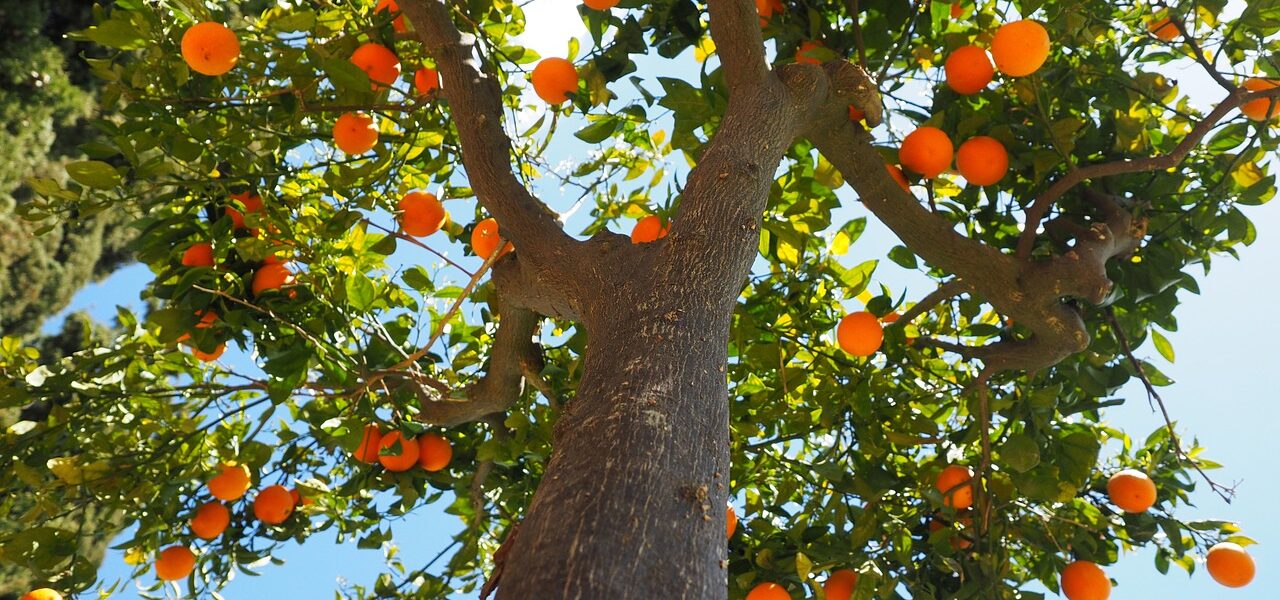Designing a garden with essential fruit trees is both practical and rewarding. Not only do fruit trees enhance the aesthetic appeal of your outdoor space, but they also provide fresh produce, contribute to biodiversity, and improve air quality. For those living in Britain, choosing the right fruit trees and understanding the best practices for their care is what actually matters for a successful garden. This article offers comprehensive insights into selecting, planting, and maintaining fruit trees to help you create a thriving garden.
Selecting Fruit Trees for Your Garden
Climate and Soil Conditions
The British climate, with its relatively mild temperatures and ample rainfall, is suitable for a variety of fruit trees. However, understanding your local microclimate is essential. Coastal areas, for instance, may have milder winters and cooler summers compared to inland regions. Soil type is another critical factor. Most fruit trees prefer well-drained soil with a pH level between 6.0 and 7.5 as we found on this guide at https://www.chrisbowers.co.uk/ regarding fruit trees growing. Conducting a soil test can help determine any necessary amendments.
Popular Fruit Tree Varieties
Several fruit tree varieties thrive in British gardens:
- Apple Trees: One of the most popular choices, apple trees come in numerous varieties, including dessert apples for eating fresh and cooking apples for culinary use. They typically require cross-pollination, so planting two different varieties can enhance fruit production.
- Pear Trees: Pears are hardy and can tolerate colder temperatures. They are relatively low-maintenance and produce delicious fruit suitable for fresh consumption and preserves.
- Plum Trees: Plums are well-suited to the British climate and are known for their sweet, juicy fruits. They require less pruning than other fruit trees and are relatively easy to care for.
- Cherry Trees: Cherries come in sweet and sour varieties, both of which grow well in Britain. Fresh cherries are the best, although sour cherries work well in baking and preserving.
- Peach and Nectarine Trees: Although more sensitive to cold, certain hardy varieties of peaches and nectarines can be grown in Britain, especially in sheltered locations or with frost protection.
Disease Resistance and Rootstock Selection
When selecting fruit trees, consider disease-resistant varieties to minimize maintenance and increase the likelihood of a healthy harvest. Additionally, choosing the right rootstock can influence the tree’s growth rate, final size, and disease resistance. Dwarf and semi-dwarf rootstocks are ideal for smaller gardens or container planting, while standard rootstocks are suitable for larger spaces.
Planting Fruit Trees
Choosing the Right Location
Fruit trees require plenty of sunlight, ideally at least six hours per day, to produce high-quality fruit. Select a location that offers full sun and good air circulation to reduce the risk of fungal diseases. Avoid low-lying areas prone to frost pockets and waterlogging.
Planting Techniques
- Digging the Hole: Dig a hole twice as wide and just as deep as the tree’s root ball. This allows the roots to spread easily and establish themselves.
- Soil Preparation: Mix the excavated soil with compost or well-rotted manure to improve fertility and drainage. Avoid adding fertilizers directly to the planting hole, as this can damage young roots.
- Planting the Tree: Place the tree in the hole, ensuring the graft union (the bulge on the lower trunk) is above soil level. To remove air pockets, fill in the hole with the adjusted soil and gently press it down. To settle the soil about the roots, water well.
- Mulching: Apply a layer of organic mulch, such as wood chips or compost, around the base of the tree. This helps retain moisture, suppress weeds, and regulate soil temperature.
- Staking and Protection: Young trees may need staking to support them against wind and to ensure they grow straight. Use a tree guard or protective wrap to prevent damage from pests and animals.
Caring for Your Fruit Trees
Watering
Adequate watering is crucial, especially during the first few years as the tree establishes its root system. In dry spells in particular, drink plenty of water. Root rot can result from overwatering.
Fertilizing
Fruit trees benefit from an annual application of balanced fertilizer in early spring, just before new growth begins. Follow the manufacturer’s recommendations for application rates. Organic options, such as compost or well-rotted manure, can also be effective.
Pruning
Pruning is essential for maintaining the health and productivity of fruit trees. It helps shape the tree, removes dead or diseased wood, and encourages new growth. The best time to prune most fruit trees is during their dormant season, typically in late winter or early spring.
- Apple and Pear Trees: These trees require formative pruning in the first few years to establish a strong structure. Once mature, annual pruning helps maintain shape and productivity.
- Stone Fruit Trees (Plum, Cherry, Peach, Nectarine): Prune these trees in late spring or early summer to reduce the risk of bacterial canker and other diseases.
Thinning Fruit
Thinning fruit is the process of removing excess fruit to ensure the remaining fruit grows larger and healthier. This practice is particularly important for apple and pear trees, which can produce more fruit than they can support. Thin the fruit when it is about the size of a marble, leaving one fruit per cluster and spacing them about 6 inches apart.
Pest and Disease Management
Common pests and diseases affecting fruit trees in Britain include aphids, codling moth, apple scab, and powdery mildew. Implementing integrated pest management (IPM) strategies can help control these issues:
- Monitoring: Regularly inspect trees for signs of pests and diseases. Early detection can prevent significant damage.
- Cultural Practices: Maintain good garden hygiene by removing fallen fruit and pruned branches, which can harbor pests and diseases. Ensure proper spacing and pruning to improve air circulation.
- Biological Controls: Introduce beneficial insects, such as ladybirds and lacewings, to help control aphid populations. Encourage natural predators by planting companion plants.
- Chemical Controls: If necessary, use pesticides as a last resort, following all label instructions and safety precautions. Opt for organic or eco-friendly options whenever possible.
Maximizing Fruit Production
Pollination
Most fruit trees require cross-pollination to produce fruit. Planting different varieties that bloom at the same time can enhance pollination and yield. Alternatively, consider planting self-fertile varieties or using grafted trees with multiple compatible varieties.
Training and Espalier Techniques
Training fruit trees against a wall or trellis using espalier techniques can save space and create an attractive garden feature. This method is particularly useful for small gardens or urban spaces. Regularly tie new growth to the support structure and prune to maintain the desired shape.
Harvesting
Knowing the right time to harvest is essential for enjoying the best flavor and quality. Fruit should be picked when it is fully ripe but before it becomes overripe or falls from the tree. Each fruit has specific signs of ripeness:
- Apples and Pears: Twist the fruit gently; it should come off the branch easily. The skin will change color and the fruit will feel firm but not hard.
- Plums: The fruit should give slightly when gently squeezed and come off the branch with a light tug.
- Cherries: Harvest when the fruit is fully colored and tastes sweet. Sour cherries should be slightly soft to the touch.
- Peaches and Nectarines: The fruit should have a fragrant aroma, vibrant color, and yield slightly to gentle pressure.
Long-Term Maintenance
Soil Health
Maintaining soil health is vital for the long-term productivity of your fruit trees. Regularly add organic matter, such as compost or leaf mold, to improve soil structure and fertility. Mulching annually helps retain moisture, suppress weeds, and add nutrients to the soil as it decomposes.
Tree Health Monitoring
Regularly inspect your trees for signs of stress, disease, or pest infestations. Addressing issues promptly can prevent them from becoming severe. Keep an eye on new growth, leaf color, and overall vigor.
Seasonal Care
Adjust your care routine according to the seasons:
- Spring: Apply fertilizer, mulch, and begin regular watering as needed. Monitor for pests and diseases.
- Summer: Continue watering, especially during dry periods. Thin fruit and monitor for pests and diseases.
- Autumn: Harvest fruit and begin preparing trees for winter by removing fallen leaves and fruit. Apply a final layer of mulch.
- Winter: Prune deciduous trees and apply dormant oil sprays to control overwintering pests. Ensure trees are protected from extreme cold.
Enhancing Your Garden’s Ecosystem
Biodiversity and Companion Planting
Incorporating a variety of plants in your garden can create a healthier and more resilient ecosystem. Companion planting involves growing different plants together to enhance growth, repel pests, and attract beneficial insects. For example, planting marigolds, nasturtiums, or herbs like basil and mint near your fruit trees can deter pests and improve pollination.
Wildlife-Friendly Gardens
Creating a garden that supports local wildlife can benefit your fruit trees. Birds, bees, and other pollinators play a crucial role in fruit production. Planting native flowers, providing water sources, and installing birdhouses can attract these helpful creatures to your garden.
Sustainable Practices
Adopting sustainable gardening practices helps protect the environment and ensures the long-term health of your garden. Consider using rainwater harvesting systems, composting kitchen and garden waste, and reducing the use of chemical pesticides and fertilizers.
Conclusion
Designing a garden with essential fruit trees in Britain offers numerous benefits, from fresh produce and enhanced beauty to improved biodiversity and environmental health. By carefully selecting the right varieties, planting them properly, and providing ongoing care, you can create a thriving and productive garden. Whether you have a small urban plot or a spacious rural garden, fruit trees can transform your outdoor space into a bountiful haven. Implementing sustainable and wildlife-friendly practices will further enrich your garden, ensuring it remains a source of enjoyment and sustenance for years to come.









